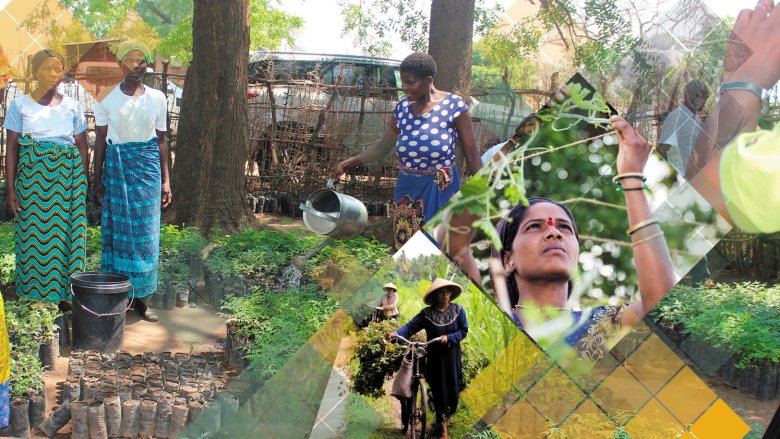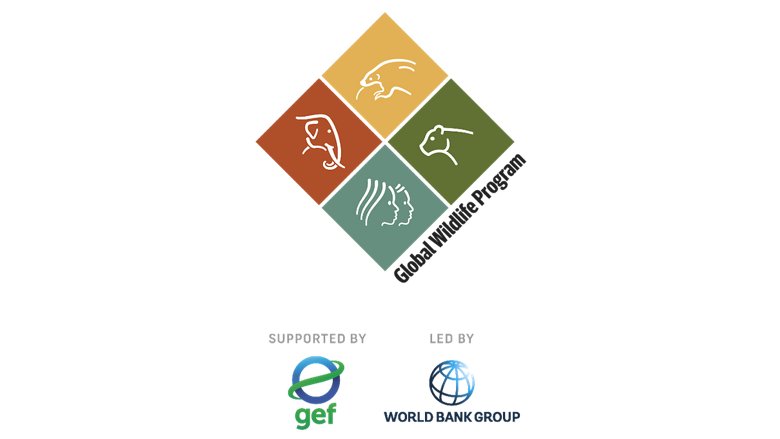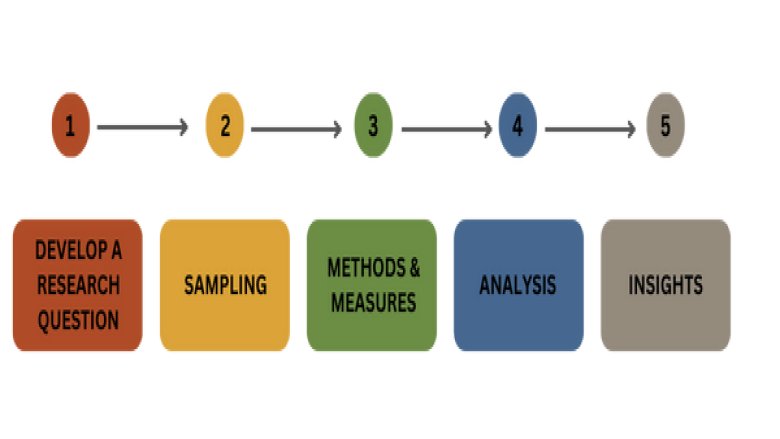Behavior change techniques hold significant potential for addressing conservation challenges but are currently underutilized and primarily focus on consumers in wildlife commodity end-markets. Social research – the study of human behaviors, attitudes, perceptions, and social dynamics – helps reveal how people interact with and impact nature and wildlife. Social research can inform the design and implementation of conservation initiatives by providing important insights into influential social and cultural factors.

The World Bank, through the GEF-funded Global Wildlife Program (GWP), collaborated with TRAFFIC to host the second workshop in a series of knowledge exchanges to enable GWP countries to bring behavior change more effectively into their projects. The workshop brought together around 30 participants from 10 GWP countries in Africa, Asia and Latin America.
The workshop introduced social research, a tool increasingly important for conservation, which should be applied at the onset of conservation planning. A simple, five-stage process for social research was presented with practical examples: wildlife trafficking in Namibia and human-elephant conflict issues in India. Participants also engaged in an exercise to apply social research in different conservation scenarios.
Workshop Summary
What is social research?
Social research is a system of studying and analyzing human behavior based on evidence gathered. The resulting insights are used to explore what people think, believe, feel and do, and the emotional and logical reasons why.
Why is social research important?
Social research is important to gain insight into, and understand the drivers and deterrents for, any human activities or actions that have consequences for conservation. It can be applied across the diversity of GWP topics and to actors along wildlife trade routes. It can be adapted to, for example, people’s interactions with wildlife and in human-wildlife conflict situations, and to support communities for wildlife economies and nature-based tourism activities.
Five stages of social research
Stage 1 – Determine the research question
It is important to decide on a research question before gathering data, as you will need a question to answer with the data you gather. A research question should be specific, clear, relevant, feasible and important. An example was shared where, in response to growing threats of transnational wildlife crime, social research was conducted with convicted and incarcerated offenders to understand the drivers for poaching and trafficking. The team determined that the research was justified because globally important wildlife populations were being placed under severe threat, but the research team did not know what drove engagement in poaching and trafficking among offenders. The research question became: How and why do individuals commit wildlife crime in Namibia?
Another example was shared from India where 500 people and 100 elephants die each year in human wildlife conflict, leading to a loss of livelihoods and wellbeing, which justified intervention. The research team needed to understand the drivers of conflict, what interventions were occurring and relevant and feasible responses to those drivers. The team developed the research question: What are the drivers of conflict and what interventions are likely to reduce them?
Stage 2 – Define the sample
There are multiple approaches to sampling for social research. The key is to be consistent. If baseline and endline data are compared, it's important that those individuals sampled in the beginning are comparable to those at the end, in relation to age, gender, income level and other socio-economic or psycho-demographic parameters.
The sample (a subset of the target population) can be determined with the help of the research question. For example, in the Namibia case, where the objective was to understand why individuals commit wildlife crime, the target population was determined by finding those individuals who are known to use wildlife products. Within that group, researchers then find those who are known to use illegal wildlife products, then those who are most likely to use them in the next 12 months. From the target population, the team identified convicted offenders as sources of information for their sample population. Starting from a target population of everyone that commits wildlife crime in Namibia, the sample was narrowed down to those that get caught, then those sentenced, then those who consent to an interview.
In the human wildlife conflict example, the team used mapping approaches. Knowing that data to understand that conflict was not uniform to the entire region, they based their sample on areas where humans and elephants were cohabiting. This was narrowed down from locations where there are corridors of elephant movement, areas of human development, and hotspots for loss of property and life.
Stage 3 - Confirm the methods
Methods are procedures, techniques, or approaches that allow researchers to gather, analyze and interpret data in order to answer research questions. Measurement can use mixed methods, such as surveys, observation, dip-stick surveys and interviews to get more robust data. Measures in social research are the tools or scales used to turn complicated ideas – the things researchers are interested in, or what people think, believe, feel, and do – into numbers or ways they can be understood and compared in a research study.
In the Namibia example, the wildlife crime team carried out 45 face-to-face, 60-minute interviews with predesigned questionnaires. The questions were open ended, semi-structured in multiple languages and audio recorded. Consent was obtained and communicated ahead of the interviews, and it was made clear to the responders that their participation would not impact their sentences. Interviewers were given some mandatory questions, and some answers had a fixed format for data analysis purposes. Preparation was crucial as cultural differences can play into even seemingly simple answers. In the India example, the team used semi-structured and face-to-face interviews, along with focus groups with community members, management, and one-on-one interviews.
Stage 4 - Conduct the analysis
Analysis can involve a variety of approaches. The simplest form is a two-by-two analysis that compares two contrasting variables on X and Y axes. Other options include descriptive statistics (measures such as average and spread), inferential statistics (informed predictions about larger populations by analyzing the data from your sample) and thematic analysis (responses from open-ended questions).
The Namibia wildlife crime project used descriptive rather than inferential statistics because the data set contained only a snapshot of those incarcerated at the time. It was not large enough to extrapolate to all poachers and wildlife offenders. The India human wildlife conflict project employed qualitative data to piece together a model that used observations to build insights.
Stage 5 - Clarify the insights
The preceding stages can help to gain appropriate insights into drivers, desires, and attitudes and help understand motivations, emotions, benefits and barriers that may stop the target audience from engaging in certain behaviors. This can also help project planners and practitioners identify which members of the target audience are unlikely to engage in behavior change, versus those that would be more open to it.
Insights offered by the wildlife crime project in Namibia supported widespread actions on behavior change, because community impacts from poaching were far reaching. Most of those interviewed expressed regret for their actions. The human-wildlife conflict team in India realized from their research process that if people had more visibility at night, this would reduce accidental conflict situations. Flashlights were therefore supplied to many villages. Other behavior change interventions included changing where food was stored and employing influencers/influential people to help spread messages about this change.
After the presentation of the examples, participants were asked to break out into two groups and undertake the five stages of social research. Inputs from the workshop informed the finalization of a GWP Technical Note on Social Research for Conservation Insight for Impact Evaluation.
Welcome and Introduction to ‘Social Research for Conservation Insight and Impact’ by Gayle Burgess, Behaviour Change Programme Leader, TRAFFIC
Illustration of Social Research Processes with Convicted IWT Offenders by Sacha Riley-Smith, Information and Data Support, TRAFFIC
Illustration of Social Research Processes Around Human-Wildlife Conflict issues by Arjun Kamdar, Wildlife Biologist, WWF
Q&A
Breakout group exercise to develop social research based on process and scenarios
Wrap-up and next steps

